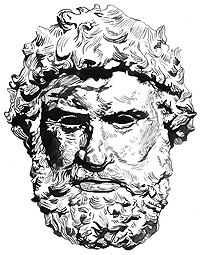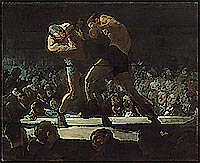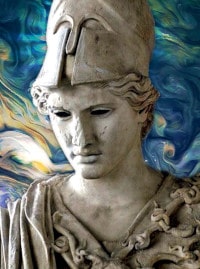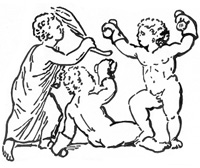This nice little document researched within the frame of America’s Colonial Lie, written as it was by one of its unwitting purveyors, opens many a tiny window upon the lives of actual Americans. The author does an honest job excavating witchcraft cases in Virginia and illuminating the mania for witch finding in England and Scotland. He does, however, loyally insert modern academic doctrine into the record, such as when he finds the record of a human chattel, named Mary, a servant without a last name, and inserts two modern suppositions, that she was “indentured,” which was a term not used outside of Pennsylvania government circles, and not until the 1740s, a period after his subject. He also insists that Mary was “white” a term rarely used in that period under study, which he brings to a close in 1732. We will return to Mary and other persecuted witches in the second part of this compressed extraction.
It is fascinating, that the general resistance to the idea of “white slavery” in America is an insistence that only Africans can be slaves. It is that simple, most readers of our age believe that slavery can only be a condition suffered by Africans, and only when it is inflicted by Christians of European descent.
Underlying this basic insane prejudice, is also the assumption that the people who ruled nations and by extension plantations, in early modern times, were rational, scientific, thinking people.
These two delusions above, are crushed in the published writings of one man, King James, who is quoted in the title, “These detestable slaves of the Devill.” Not only did James here demonstrate that all people, especially English subjects, could be slaves, he also demonstrates what a crazy delusion ruled his mind. For, as Hudson points out, this King was convinced that witches cursed the North Sea in 1589 and made it rise against his wife to prevent their marriage as she came over from her father’s nation. Then, most probably with the assistance of plantation and European slavery advocate, Sir Francis Bacon, James wrote a manual on witchcraft. Published in 1597, Demonologie, was released by the monarch even as he had copies of the scientific attempt to study witchcraft written in 1584 by Reginald Scott, Discovery of Witchcraft, burned.
In 1604, the King who sponsored the publication of the 1611 King James Bible, passed a Witchcraft Statute, reproduced by Hudson. James was not an exception. In 1542, Henry VIII enacted a witchcraft law, which was repealed in 1547. In 1563, the same bitch queen, Elizabeth, who enacted the most severe poor laws for which the basis of Plantation Economy was founded, put into action a witch statute in which that crime was “of the highest magnitude.”
These crimes had to do with the murder of independent women, who, for the most part, were not under the protection of husband or father. The witchcraft mania that swept Europe was most simply a means of slaughtering social outliers who held no martial stature. The insane mania that culminated in England with the career of Mathew Hopkins, witch finder general and author of the book Discovery of Witches in 1647 demonstrates that Europeans were more superstitious and murderous than the savages they warred against in the forests of America. Witchcraft hysteria, as will be seen in the treatment in this series Wonders of the Invisible World, was primarily an exercise in social control.
The kook King James opined that the forests of North America were home to witchcraft, where “...the Devill findes greatest ignorance and barbarite…” in “such wilde partes of the world.”
Below are some of the kook King’s pronouncements:
“An acte against conjuration Witchcrafte and dealing with evill and wicked spirits.”
“...to tell or declare in what place any treasure of Golde or Thinges lost or stollen should be founde…”
The above brought a year of imprisonment, display, humiliation and confession. A second offense was a felony, punishable by death, unless the judge permitted the offender to be sold into slavery in the Plantations.
The Country Justice, by Micahel Dalton, 1618, established means of investigating witchcraft charges, which included birthmarks. In such cases “ancient women” were to strip and examine the accused witch. Any mark or scar that could be contrived to be unnatural or not like other women was evidence against her. Other evidence included misfortunes predicted by the woman. Such acts as informing a neighbor that one’s chickens would not live well under their conditions, or that a man who drank too much might suffer ill health or death, could serve as evidence for witchcraft.
The second portion is going to examine the case of women accused in Virginia. First, we shall state that it was very rare for a servant or slave to be accused. Indeed, just as in the period of the early Christian church under pagan Rome, slaves were found handy for denouncing their master or mistress concerning secret worship.
From The County Justice
“6. The examination or confession of the children, or servants of the Witch.”
Do note that confessions of witnesses and accused were traditionally had through torture. However, it was more likely that the slave witness would be beaten, as a literate person of the master class who could recite a biblical passage could plead “benefit of clergy,” then, even if convicted and sentenced to a beating could avoid that humiliation. The 51st Psalm was typically used in England. After 1732, women, Negroes, mulattoes and Indians were also extended the privilege. Hudson declares that white males held this privilege, neglected that this was only for freemen, who were a minority.
Benefit of clergy was not extended to a second conviction of witchcraft, which was a felony. Other acts that negated benefit of clergy included, murder, rape, treason, horse stealing, burglary, robbery and arson.
Before looking at the individual cases we should consider the front piece, an illustration that seems to be a woodcut from the 1600s and is not attributed.
A rural background with a cross, a church and a house is topped by cloudy skies.
The Devill stands as a winged man with reptilian tail and webbed feet. His face is beaked, his head horned goatishly. He extends his hand to a youth who is being presented for indoctrination by two women of the mesmerized mob. The women are of the master class, distinguished by great dresses and well coiffed hair. Behind these women one young man spies upon the possession of the youth, as the Devill places his hand upon the head of that boy. Another, bearded man in middle years, consipres with the young fellow in a whisper as he turns away to inform the authorities.
This illustration, taken in the Plantation America context, suggest that wayward activity, like apprentices and servants running away, and widows refusing to remarry and thus give over their dead husband’s property to another man of his class, were cases for demonic possession. This reminds us of the illustration of a devil or demon leading a runaway on his path, that illustrates the cover of America in Chains.
Thanks to Carson O. Hudson for his fine work.
To support Plantation America research and examine annotated and summarized primary source texts go to:
link › patreon.com/jameslafond











